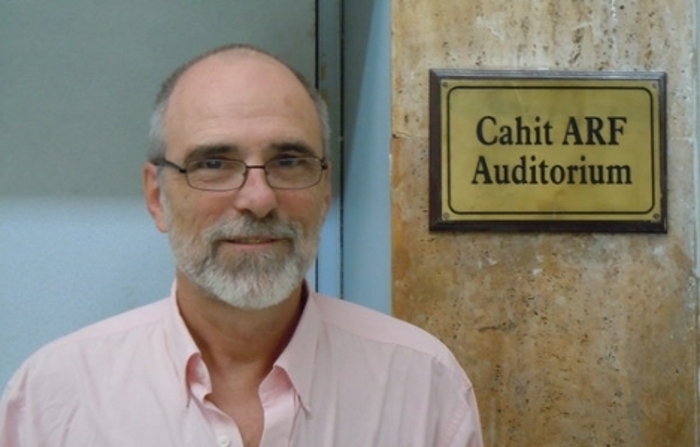Doug Ravenel’s work on the Kervaire invariant one
The Annals of Mathematics has accepted for publication the paper “On the non-existence of elements of Kervaire invariant one”, by Doug Ravenel with co-authors Mike Hill from UCLA and Mike Hopkins from Harvard. The paper is over 200 published pages, an unusual devotion of space to one paper for this journal. The length is justified by the need to explain many new things in order to understand the proof.

The principal result is the culmination of work by many of the leading algebraic topologists over almost 60 years to answer a question first raised by Kervaire and Milnor. This question arose because of two seminal examples. Kervaire produced a 10-dimensional topological manifold that supported no smooth structure, and Milnor constructed smooth structures on the 7-dimensional sphere which are not equivalent to the standard smooth structure with which we do calculus. The question which arose from these examples is whether a smooth manifold with dimension congruent to 2 mod 4 can have Kervaire invariant one. The answer provided in the paper is only if the dimensions are 2, 6, 14, 30, 62 (where examples exist), or possibly 126.
The story starts with work of Kervaire published in 1960. On the algebraic side, there is an invariant due to Arf associated with quadratic forms on
However, the missing piece touched on an important question concerning the homotopy groups of spheres. These things enter the discussion through a process known as the Pontryagin-Thom construction. This process takes us from framings of smooth manifolds embedded in spheres to functions mapping one sphere to another with a dimension decrease equal to the dimension of the manifold. Indeed, only the dimension of the manifold matters. Moreover, it was expected by many topologists that the resolution of the Kervaire-Milnor question would be found in homotopy theory.
But how is one to use homotopy theory when so little is actually known about these groups in the dimensions relevant to the problem? The popular approach is through the Adams spectral sequence. This is a complex piece of homological algebra, but its method may be described by a metaphor. Imagine a large crowd of people each with a unique set of names, but no indication of occupation. The problem is to identify the mathematicians in the crowd. Adams spectral sequences supply a set with named elements among which are homotopy classes of maps of spheres. In principle, the homotopy classes are found by a “Sherlock Holmes” method that excludes elements which do not come from spheres. The exclusions are determined by “differentials”. After elimination of all the elements which do not come from spheres, only those that remain come from spheres. In our metaphor, an exclusionary principle could be that any mathematician having a last name with more than 10 letters does not have “John” among the set of names. The problem is compounded because in the Adams spectral sequence there is no algorithm for performing the cull.
In 1969, W. Browder published a result that clarified the Kervaire-Milnor problem in terms of the Adams spectral sequence. He identified all the names that could be attached to homotopy classes emanating from the Pontryagin-Thom construction applied to framed embeddings on 4k+2-dimensional manifolds:
It would be a mistake to think that the result was achieved by further penetration following Browder’s result. The length of the paper in part is to provide the necessary new developments in order to understand the proof.
Finally, let me comment on the impact of this work beyond its resolution of a major outstanding problem. Part of the success of algebraic topology is the creation of ever more general constructions to be applied to spaces. Typically the initial advance entails greater abstraction over its predecessors and it takes some time to learn how to make effective calculations for problems of interest. But when a significant result is achieved, it puts the method in the center of research. Such is the case for the Hill-Hopkins-Ravenel paper.
